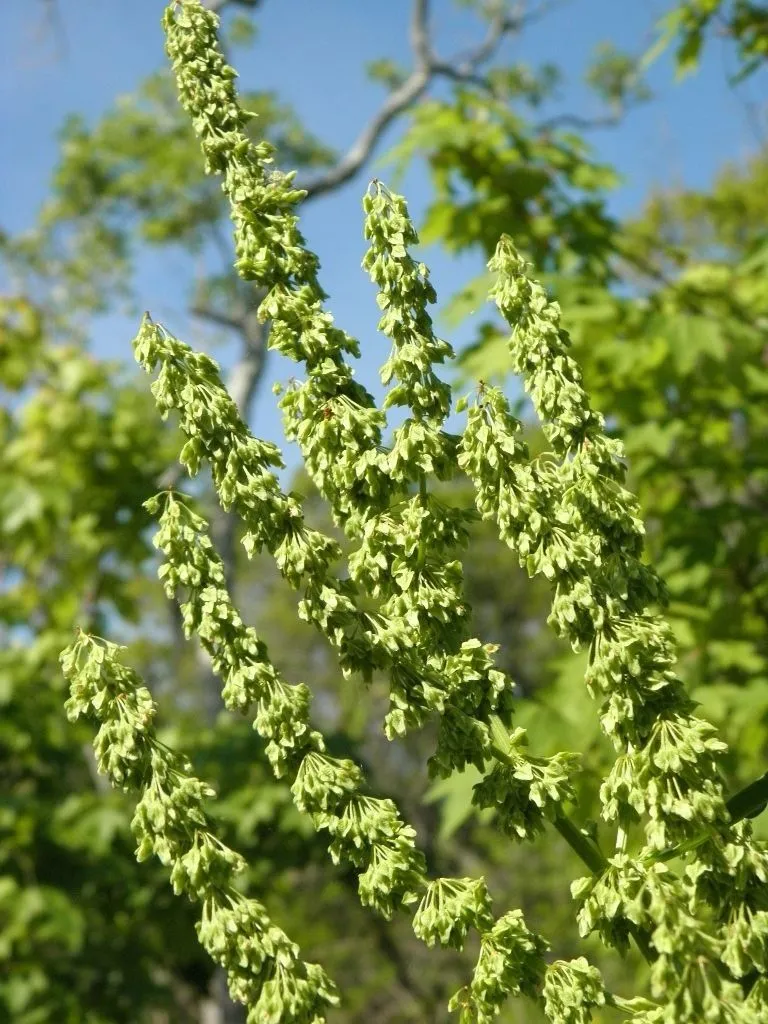
Author: L.
Bibliography: Sp. Pl.: 334 (1753)
Year: 1753
Status: accepted
Rank: species
Genus: Rumex
Vegetable: False
Observations: SE. Canada to NE. Mexico
Swamp dock, scientifically known as Rumex verticillatus, is a distinctive perennial plant that belongs to the Polygonaceae family. This species was first described by the renowned botanist Carl Linnaeus in his seminal work “Species Plantarum” published in 1753.
This plant exhibits a robust and adaptable nature, thriving primarily in wetland habitats. It is native to a broad geographical range extending from Southeastern Canada down to Northeastern Mexico. Typically found in marshes, swamps, and along the banks of rivers and streams, Swamp dock is well-suited to saturated soils and can often be spotted in areas prone to flooding.
Rumex verticillatus is distinguishable by its elongated, lance-shaped leaves which are arranged in a whorled pattern around the stem. The leaves are often large and broad, contributing to the plant’s lush, green appearance. During its flowering period, Swamp dock produces clusters of small, greenish flowers that develop along a tall, erect spike. These flowers later give way to reddish-brown seeds that are dispersed by wind and water, aiding in the plant’s propagation.
The ecological significance of Swamp dock is notable, as it provides habitat and food for various wildlife species. Additionally, its presence in wetland ecosystems plays a crucial role in soil stabilization and water purification. Despite its robust nature, Rumex verticillatus can be susceptible to habitat destruction due to human activities such as drainage of wetlands and land development.
In terms of utility, this plant has been traditionally used in some indigenous practices. It can also be of interest for botanical studies and conservation efforts aimed at maintaining wetland biodiversity.
In conclusion, Swamp dock (Rumex verticillatus) is a remarkable species that contributes significantly to the ecological health of wetland areas across its range. Its resilience and adaptability make it an important subject for ongoing research and conservation initiatives.
Eng: swamp dock, water dock
Fra: patience verticillée
En: Swamp dock, Water dock
Fr: Patience verticillée
Taken Apr 19, 2019 by de sousa enrique (cc-by-sa)
Taken Mar 18, 2012 by EOL − Jason Sharp (cc-by-nc-sa)
Taken Jan 1, 1900 by EOL − John Hilty (cc-by-nc)
Taken Nov 27, 2014 by EOL − Christopher Tracey (cc-by-nc-sa)
Taken May 18, 2015 by EOL − knlongm87 (cc-by-nc)
Taken Mar 18, 2012 by EOL − Jason Sharp (cc-by-nc-sa)
Taken Jan 1, 1900 by EOL − John Hilty (cc-by-nc)
Taken Jan 1, 1900 by EOL − USDA NRCS Wetland Science Institute. (public)
Growth habit>: Forb/herb
Family: Myrtaceae Author: (F.Muell.) K.D.Hill & L.A.S.Johnson Bibliography: Telopea 6: 402 (1995) Year: 1995 Status:…
Family: Rubiaceae Author: Pierre ex A.Froehner Bibliography: Notizbl. Bot. Gart. Berlin-Dahlem 1: 237 (1897) Year:…
Family: Sapindaceae Author: Koidz. Bibliography: J. Coll. Sci. Imp. Univ. Tokyo 32(1): 38 (1911) Year:…
Family: Asteraceae Author: A.Gray Bibliography: Pacif. Railr. Rep.: 107 (1857) Year: 1857 Status: accepted Rank:…
Family: Fabaceae Author: Medik. Bibliography: Vorles. Churpfälz. Phys.-Ökon. Ges. 2: 398 (1787) Year: 1787 Status:…
Family: Aspleniaceae Author: (Cav.) Alston Bibliography: Bull. Misc. Inform. Kew 1932: 309 (1932) Year: 1932…